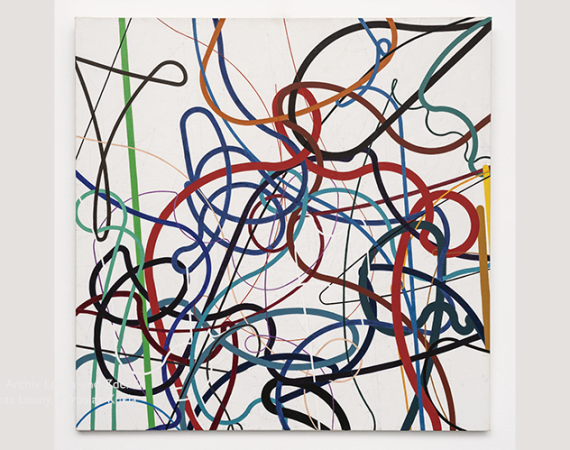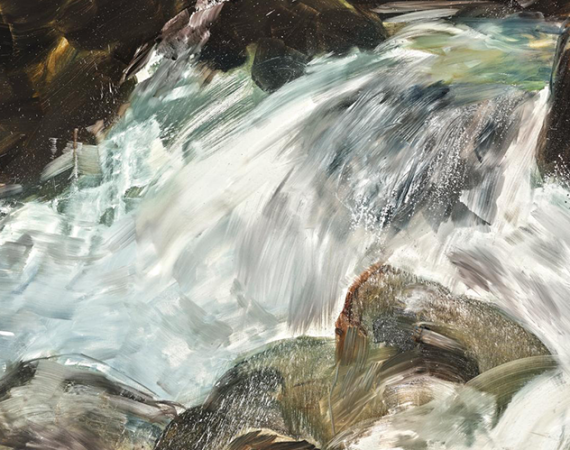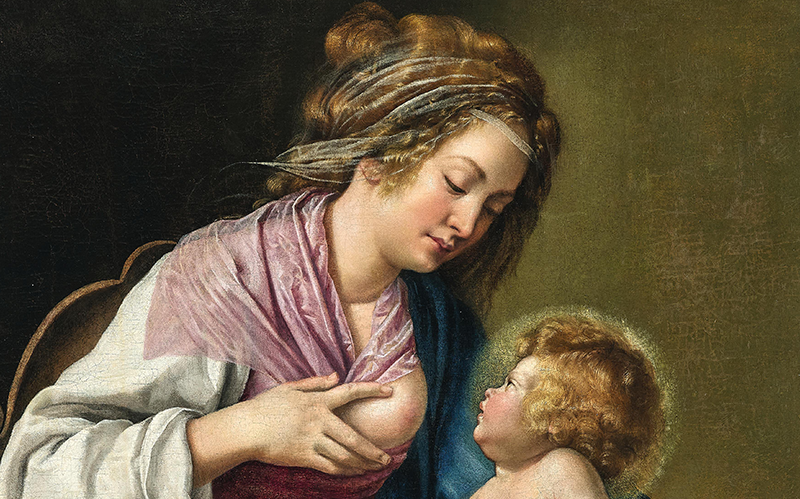
Artemisia Gentileschi, hailed as one of the most important painters of the Baroque period, enjoyed considerable success during her lifetime. An early Madonna by the artist is among the highlights of Dorotheum’s Classic Week in October.
Born in Rome, Artemisia Gentileschi was trained from an early age by her father, the painter Orazio Gentileschi (1563–1639). She lived in Florence from 1613 to 1620 and was one of the first women to be admitted to what is now the Accademia delle Arti del Disegno in 1616, where her paintings quickly won her acclaim. She later returned to Rome and, from 1630, worked in Naples, where she also painted for the Spanish court. In 1639/40, she was in London, executing commissions for the English Crown. At every stage of her life, including her time in Venice from 1626 to 1630, she mingled in humanist and literary circles, as evidenced by the many laudatory poems about her and her art. Although honoured with a biography as late as the 18th century, she faded into obscurity by the 19th century. She painted two versions of what is probably her most famous work, Judith Slaying Holofernes (1612/13 and 1613/14), which are now in Naples and Florence, respectively.
The 1610 painting Susanna and the Elders – her earliest signed and dated work – is often thought to be her journeyman’s piece, signalling the end of her training. It is likely that around this time she began the first in a series of Madonna paintings. These works share similarities not only with each other but also with a painting by her father, dated 1609 (now in the National Museum of Art in Bucharest). For years, only two of Artemisia’s Madonna paintings were known to exist: one in the Palazzo Spada in Rome and the other in the Palazzo Pitti in Florence.
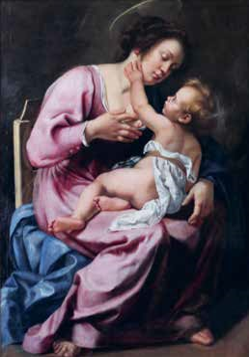
Both paintings have long been the subject of debate, with scholars occasionally at odds over their attribution and exact dates. The Madonna in Palazzo Spada, originally part of a collection that included works by both Orazio and Artemisia Gentileschi, was owned by a Roman collector until 1637. Shortly afterwards, it became part of the Spada family collection. It is possible that Artemisia’s husband, Pierantonio Stiattesi, a pharmacist, took the painting to Rome at her request in 1616. The Madonna in Palazzo Pitti has likely been there since at least 1663. Both paintings could have been created in either Rome or Florence.
The other two paintings are privately owned. The artwork currently up for auction at Dorotheum gained wider recognition thanks to two major exhibitions on Artemisia: one in Milan in 2011 and another in Paris in 2012. The second one, discovered in 2015, has been shown in exhibitions on female painters of the Baroque period, first in Ghent in 2018, then in Milan in 2021. It appears to be unfinished, missing the seating found in the other related works. This has led to speculation that it may be the painting listed in the inventory of Artemisia’s belongings left behind in Florence in 1620.
All four paintings show Mary seated on a chair – although the chair is absent in the unfinished version, she is still clearly in a seated pose – offering her left breast to the Christ Child, who rests on her lap and looks up at her. In the Palazzo Pitti version, the child is holding a pair of cherries, while in the Palazzo Spada painting, he tenderly reaches out to touch his mother’s face. The Dorotheum version shows a faint halo behind the child’s curly head; the curls in the more recently discovered painting are darker. Despite these subtle differences, the striking similarities between the four works suggest that they were probably based on the same design. Probably inspired by her father’s 1609 painting, it seems Artemisia’s versions were executed between 1610 and 1620, before she left Florence.
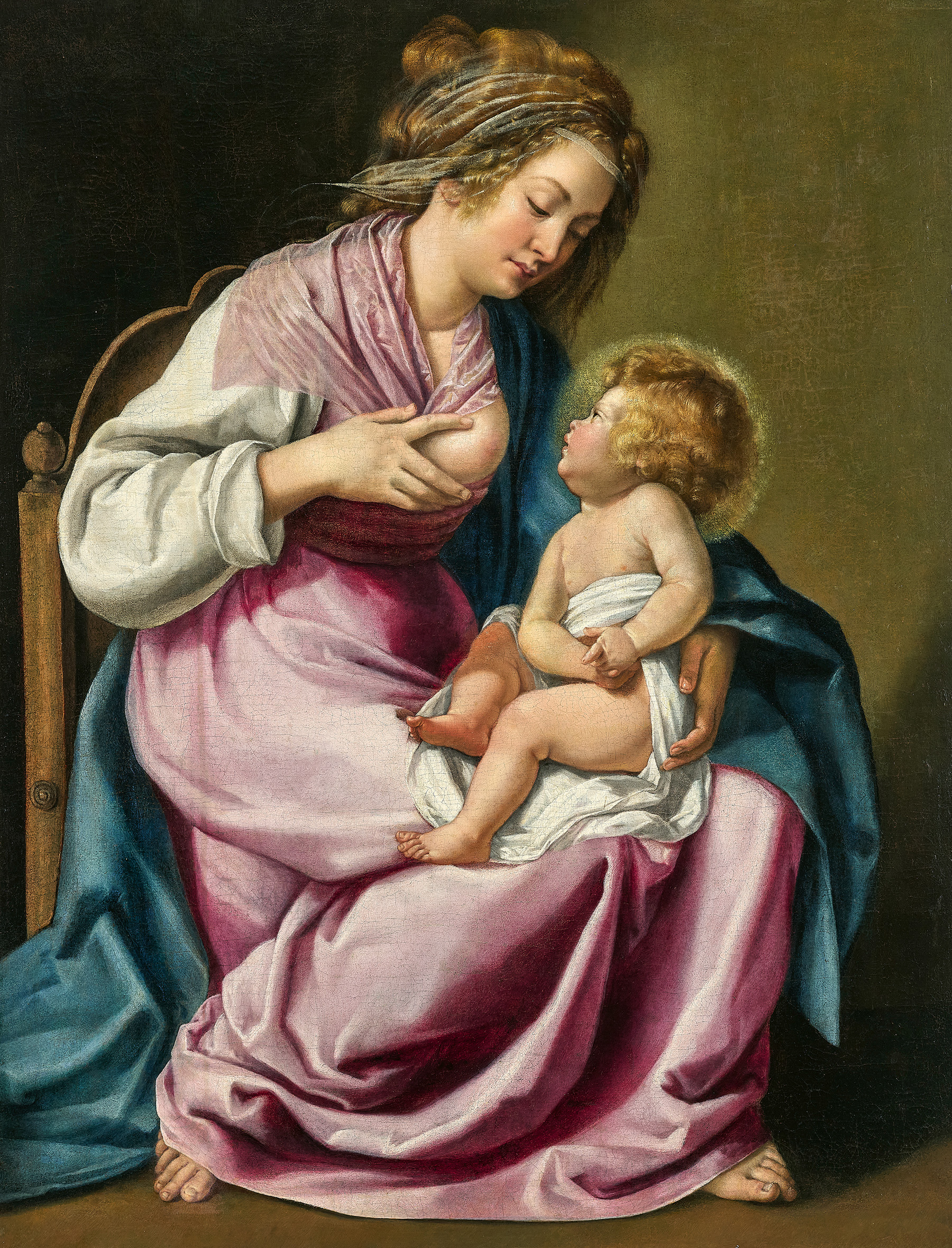
AUCTION
Old Masters, 22 October 2024, 6 pm
Palais Dorotheum, Dorotheergasse 17, 1010 Vienna
old.masters@dorotheum.at
Tel. +43-1-515 60-403









